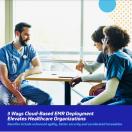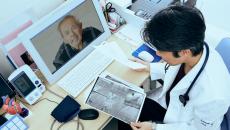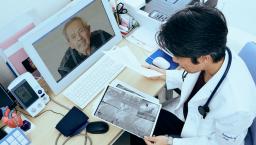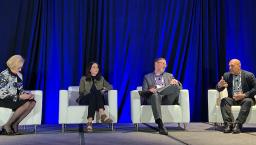How to overcome the nursing shortage challenge with a people-first, data-driven approach

Photo: laflor/Getty Images
Countries globally are struggling to cope with an acute nursing shortage. In Singapore alone, the number of nurses needed is expected to grow by about 40% in the next six years.
This global trend will see healthcare providers soon face a potential shortfall of 13 million nurses. Besides threatening patient outcomes, this piles pressure on working nurses – driving more to leave their jobs.
To sustain commitments to preventive medicine and ageing populations, providers are turning to short-term solutions, hiring costly temporary staff and increasing reliance on telemedicine. When these don’t work, units are closed and clinical programmes are phased out.
Automate non-direct patient work with a strong digital core
A study in the US discovered that just 21% of nurses’ time is spent on direct patient care. The remainder of nurses’ time is often consumed by inefficient workflows, clinical documentation, and manual administrative tasks.
It is therefore vital to understand how care can be delivered more efficiently so that nurses spend less time on non-direct patient care. To that end, Accenture recently published a report pointing the way ahead for providers seeking to combine talent and technology to help solve the nursing shortage.
Over a third of the clinicians we surveyed globally say AI can increase their time with patients and enhance procedural accuracy. This coincides with Accenture research showing that almost 40% of healthcare roles have potential to be affected by generative AI.
Our top recommendation to get started? Build a strong cloud-based digital core with an integrated data foundation, connected clinical workflows and pervasive security. With this approach, providers can move fast to adopt new digital and AI solutions that alleviate the strain on nurses.
Cloud-powered, people-centric care reinvention
We already know caregivers want solutions like these. In our global survey, more than 90% of clinicians agree that automation can help them with clinical documentation. Positive impact can already be seen from AI-powered solutions like supply/demand matching, inpatient monitoring and virtual nursing assistants. AI-enabled robots, for example, can support nurses on their shifts by helping patients with daily routines and reminding them to take medications.
It is important, however, to recognise that each nurse will have their own comfort level with technology. Providers should approach digital adoption with an open mindset and avoid making assumptions about widespread acceptance. They can explore user-friendly solutions that seamlessly integrate into existing workflows, requiring minimal intensive training. This approach allows nurses to efficiently manage their tasks, ultimately freeing up more time for them to excel in areas where their expertise truly shines, like providing direct patient care.
Besides leveraging technologies like AI, providers can also seize opportunities to offload non-clinical tasks from critical shortage areas. This could be via contracting, offshoring, or by providing training or support to families and caregivers so they can take on some of the work themselves.
Getting started…in a tough financial climate
The nursing shortage is forcing healthcare providers to increase reliance on emerging technologies. But funding these investments is challenging. In the US, 60% of clinicians say high upfront costs are a barrier to adoption of digital health tools.
Providers can unlock funds to invest in technology solutions by focusing on cost optimisation, identifying ways to reinvent clinical processes, and working more efficiently. One example is smart strategic investments, like early SaaS adoption, that can reduce cloud migration costs and lay the foundation for continuous reinvention.
Providers can also use operational and population health data to identify time-saving solutions with strong returns on investment. An example is digital twin simulations that use predictive analytics for risk-free testing of new ideas.
Ready for reinvention
The nursing shortage represents a huge challenge. While there’s no quick fix, deploying a new cloud-based digital core creates exciting potential for transforming the nursing experience and improving productivity.
Key starting points: Create and fund a technology roadmap with accountability and ownership. And break down organisational silos by adopting new business processes and solutions. For healthcare to make the changes that are imperative, enterprise-wide collaboration is essential.
With a people-first, data-driven approach, we can harness the power of technology to tackle our nursing shortage together.































